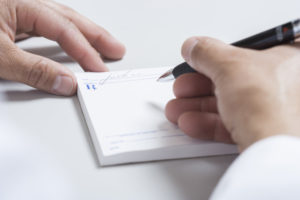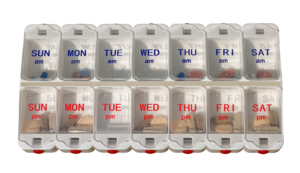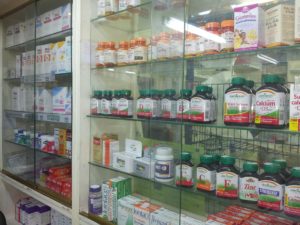In our travel classes, Dan and I regularly get asked what is the best way to pack prescriptions. That is a good question; however, packing is not the only concern when taking drugs overseas. There are a number of things a traveler should NOT do before going abroad with medicine.
- Never Carry Drugs for Someone Else
Sounds like a no brainer, and yet we still hear stories of people getting in trouble around the world for this. Even if you are traveling with someone, don’t put their medicine in your bag. Let each person hold their own on this—the name on the prescription for every drug you take, should be your own. - Never Travel without a Prescription

And yes, you should take an actual prescription. Many countries say the require it when you read their rules for going through customs. Requiring and enforcing are different. I have entered numerous countries that require a prescription, and have not asked for mine. This is especially true in Europe, where if you read their customs enforcement rules, most countries say they require a prescription signed by a doctor, and yet they would surprise many American travelers, since they have never been asked for documentation.Still, it is best to be safe rather than sorry. What if you get the one
rule-enforcing customs official, or perhaps your bag is randomly selected for inspection. You do not want to lose your prescriptions because you were not prepared. Around the world, I have been asked three times to present my actual prescription. Every time, I have been glad to have one.The bottle label and papers you get from pharmacies may be fine for some medicines, but not all. Don’t chance it, simply get a real note from your doctor.
What should be included in a prescription for travelers? Ask your doctor to
include these five things on letterhead that includes their contact
details:- Your full name
- Generic name for the drug
- Medication dosage and duration
- Reason for requiring it
- Doctor’s signature
- Never Put Your Pills in Day-of-Week Pill-Holders
 Many travel professionals say you should leave prescriptions in their original containers. This advice has been given so often, many travelers believe it is a universal law. It is not. In the U.S., the Transportation Security Administration (TSA) says on their website “We recommend, but do not require, that your medications be labeled to facilitate the security process.” Facilitating an easy process is the key. If a traveler shows up at a country border with a baggie of unidentifiable tablets, there are going to be questions. Border officials cannot possibly recognize what every pill is, so do what you can to make their job easier. This may mean leaving your prescriptions in original containers, or if you put them in something else, then clearly label what you are carrying. Since every pill you take into a country should be easily identifiable, I recommend not putting your pills in day-of-week holders until you have
Many travel professionals say you should leave prescriptions in their original containers. This advice has been given so often, many travelers believe it is a universal law. It is not. In the U.S., the Transportation Security Administration (TSA) says on their website “We recommend, but do not require, that your medications be labeled to facilitate the security process.” Facilitating an easy process is the key. If a traveler shows up at a country border with a baggie of unidentifiable tablets, there are going to be questions. Border officials cannot possibly recognize what every pill is, so do what you can to make their job easier. This may mean leaving your prescriptions in original containers, or if you put them in something else, then clearly label what you are carrying. Since every pill you take into a country should be easily identifiable, I recommend not putting your pills in day-of-week holders until you havereached your destination. If you do, then it may slow the customs process. I have heard of travelers that have had medicine confiscated because officials could not easily tell what it was.
- Never Go without Checking Regulations at Your Destination
Even if you have a medical reason for taking a drug, and travel with a doctor’s signed note, you still may not be allowed to enter a country with certain substances. Some countries have banned-drug lists. Unfortunately, there is no one place where a traveler can see the prohibited drugs for every country. You can generally assume that you should not travel with drugs that are illegal in the U.S. That includes marijuana, even though some states have legalized it.How do you discover what medicines are on the do not take list for a destination? You can contact a country’s embassy or consulate. However, I have received limited responses when I have done this. In fact, three emails to the Indian embassy never garnered a response at all. I have had better luck with embassies of other countries, so it can be a starting point. There is a list of “Web Sites of Foreign Embassies in the U.S.” on the U.S. Department of State website at: www.state.gov/s/cpr/32122.htm. For some countries, you can discover their rules by checking on their Immigration & Boarder websites. Although this may turn into a complicated search of one page sending you to numerous others. The Australian Government Department of Immigration and Border Protection has a very in-depth website. But, researching what medicines I could take there,led me to five different pages:- Can I bring it Back?
(www.border.gov.au/Trav/Ente/Brin/Can-I-bring-it-back) and two pages there on medicine and substances - Entering Australia (www.tga.gov.au/entering-australia) had an article from 8 December 2016 which had sections on “Coming to Australia with medicines and medical devices” and “Traveller’s Exemption”
- For travelers & visitors (www.tga.gov.au/travellers-visitors) where there is a video you can watch on travelling with medicines
- The Office of Drug Control – Travellers (www.odc.gov.au/travellers) had an article from 5 July 2017 on the topic
- Traveling with Medicines (www.border.gov.au/Factsheets/Documents/travelling-with-medicines-fact-sheet-july-2014.pdf) was a fact sheet that consolidated much of the information
The average tourist probably does not need to do this much research. But the problem is, there is simply no one place to get an all-inclusive list on what medicines you can or cannot travel with and what requirements every country has. I have found some useful information on Wikipedia. For instance, there is a Wikipedia page entitled “Drug Policy of India”. It includes a lengthy list of controlled substances.
If you do travel with a prescription, especially one that may be controlled or banned in some countries, it is probably worth the effort to navigate websites and send off emails until you know the specific rules for your destination. A few drugs that are often controlled are codeine, pseudoephedrine, morphine and dexamphetamine. That is just a few examples, the controlled substances list for India has 237 drugs.
- Can I bring it Back?
- Never Assume Over-the-Counter Here is Over-the-Counter Everywhere
 Do you take any over-the-counter medication? If yes, don’t assume that it is over-the-counter around the world. If it is a prescription drug at your destination, then you should ask your doctor for a note detailing why you are traveling with it. An example of this is melatonin. Melatonin is an over-the-counter drug in the U.S. that many travelers take with them to combat jet lag. However, it is a prescription drug in many European countries, Australia and elsewhere. Without a prescription, a border official may confiscate it. Does this happen often? No, but it could.
Do you take any over-the-counter medication? If yes, don’t assume that it is over-the-counter around the world. If it is a prescription drug at your destination, then you should ask your doctor for a note detailing why you are traveling with it. An example of this is melatonin. Melatonin is an over-the-counter drug in the U.S. that many travelers take with them to combat jet lag. However, it is a prescription drug in many European countries, Australia and elsewhere. Without a prescription, a border official may confiscate it. Does this happen often? No, but it could. - Never Forget to Follow TSA Rules when Leaving the U.S.
And don’t forget before boarding your international flight, you will need to go through TSA security at the airport. As such, stay up-to-date on TSA rules of packing prescriptions. This is especially important for liquids. (www.tsa.gov)
